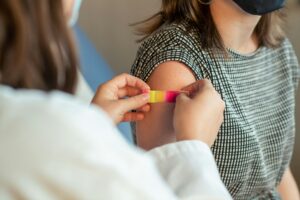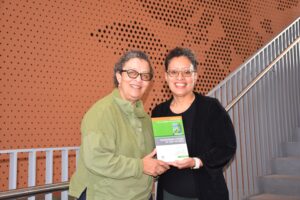
A new mother in Mildura, Victoria, has played a pivotal role in uncovering a cluster of an ultra-rare disease, infant botulism, after noticing a troubling pattern in her community. Bree Whitelegg’s observations led to a two-year investigation by the Murdoch Children’s Research Institute, revealing six additional cases in the region.
Whitelegg’s son, Lucas, was hospitalized with the rare condition, prompting her to question Professor Jim Buttery about its rarity. Her inquiry sparked a deeper investigation when she realized she knew two other families affected by the same condition. This anomaly was particularly striking given that only 12 cases of infant botulism had been recorded in Victoria from 1978 to 2022.
The Unfolding Investigation
The discovery of this disease cluster began with Whitelegg’s intuition and persistence. Her conversation with Professor Buttery highlighted the unusual concentration of cases in Mildura, a town in Victoria’s far north. This prompted a comprehensive review of past cases by Dr. Rachael Purcell and her team.
Dr. Purcell, who led the investigation, emphasized the importance of listening to patients. “We’re often told in healthcare to listen to our patients,” she noted. “I think this is a really wonderful example of that.”
Infant botulism is caused by spores from the bacteria Clostridium botulinum. In infants, these spores can germinate and release a powerful neurotoxin, leading to severe paralysis. The symptoms begin with constipation and can progress to paralysis of the head, face, and throat, eventually affecting breathing.
Understanding Infant Botulism
Globally, infant botulism is rare and often found in specific hotspots, such as California. Honey is a known risk factor, which is why parents are advised against giving it to babies. Whitelegg, an oral health consultant, was aware of this risk and had advised against using honey-dipped dummies.
Lucas’ condition deteriorated rapidly, leading to a 10-month stay in the ICU. Despite being exclusively breastfed, he contracted the disease, highlighting the mysterious nature of its transmission. Whitelegg’s experience and knowledge of other affected families were crucial in identifying the cluster.
Searching for Answers
The investigation by Purcell and Buttery involved reviewing all known cases of infant botulism in Victoria. They found that eight of the 12 cases were in north-west Victoria, with five clustered around Mildura. Another case involved a child who had recently traveled through the region.
Professor Buttery remarked on the unusual cluster, stating, “There appeared to be an unusual cluster. We’ve since been able to demonstrate it statistically. But we haven’t been able to find any obvious source.”
“My guess is clostridia – they are very hardy little bugs,” says Buttery. “They typically survive very well in the soil. My best guess is, for whatever reason … there is a greater soil contamination in that region near the Murray River.”
Whitelegg speculated that a house renovation, which stirred up dust, might have been a contributing factor, though proving this is challenging.
Implications and Future Steps
Identifying and eradicating the source of this rare bacteria in such a vast area is costly and complex. Instead, Dr. Purcell advocates for increased awareness among local healthcare providers. She urges doctors to consider infant botulism when treating patients with paralysis and constipation, as early treatment is critical for recovery.
California has developed an effective antitoxin, but its high cost and limited availability pose challenges. Lucas’s treatment required sending a stool sample to the U.S. for confirmation before the drug was administered. Whitelegg recalls the ordeal, stating, “By the time Lucas had it, the toxin had already attached itself to all the little nerve endings. He just had to ride it out. It’s a really shitty thing.”
The findings from this investigation underscore the importance of vigilance and patient advocacy in healthcare. As researchers continue to seek answers, the hope is that increased awareness and early intervention can prevent future cases in the region.






